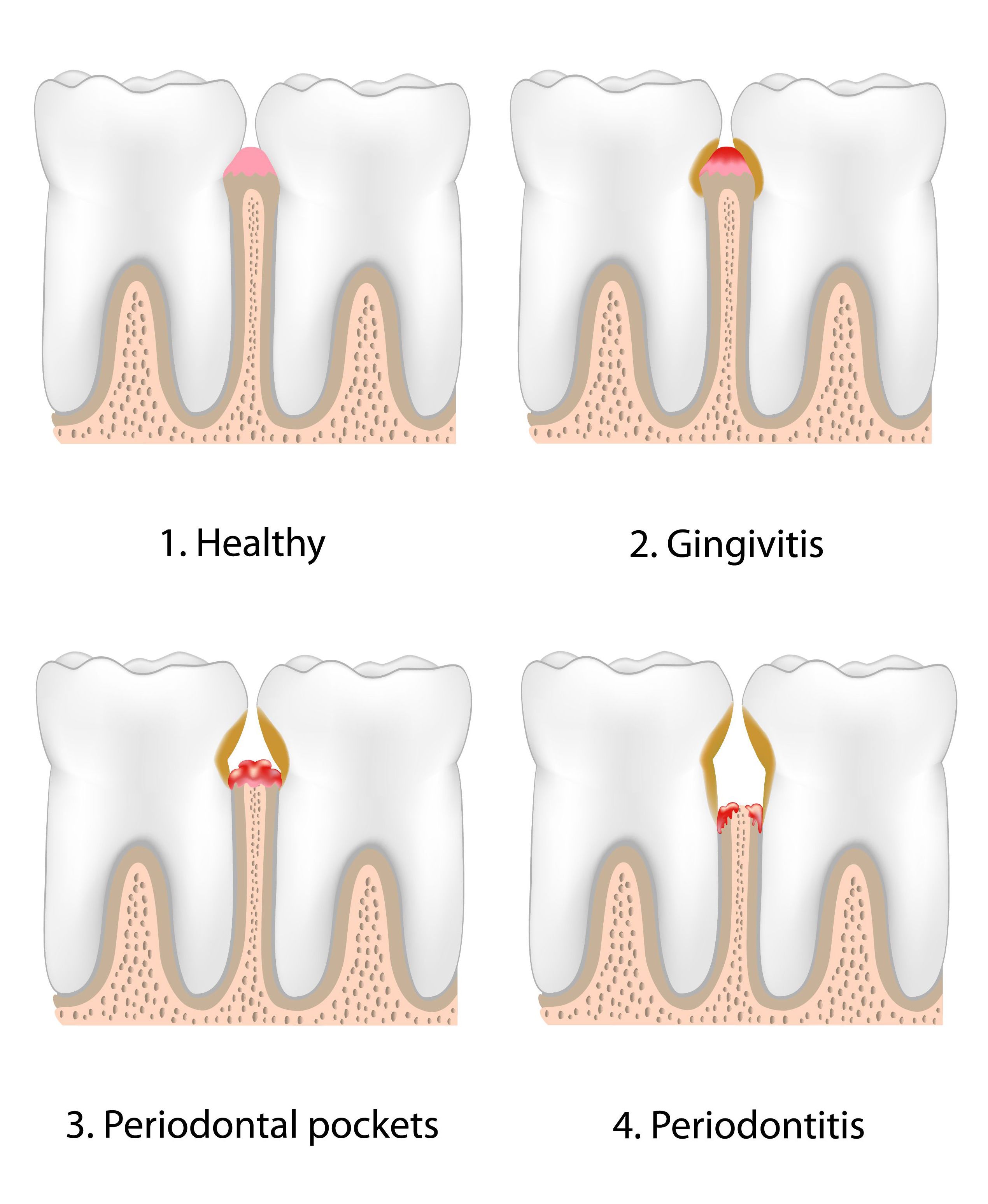Treatment for Gingivitis
By John Rink DDS on September 12, 2018
 Gingivitis is the first stage of gum disease. Characterized by red, puffy, tender gums, this condition can be completely reversed with a routine dental cleaning and proper periodontal care to keep the gum line clean and healthy.
Gingivitis is the first stage of gum disease. Characterized by red, puffy, tender gums, this condition can be completely reversed with a routine dental cleaning and proper periodontal care to keep the gum line clean and healthy.
Leaving gingivitis untreated, however, can result in periodontitis, a much more serious condition. Periodontitis can lead to infection, mobility, and tooth loss.
Here, our team at Charleston Center for Cosmetic and Restorative Dentistry in Charleston, SC explores the symptoms, causes, and treatments for gingivitis. Proactive care can eliminate infection and preserve your oral health for years to come.
What Causes Gingivitis?
When plaque deposits are not removed from the teeth on a daily basis, oral bacteria feed on them. As the bacteria populate, the gums become red and inflamed. Gingivitis is the body’s inflammatory response to irritants along the gum line.
Symptoms of Gingivitis
The first sign of gingivitis is usually red, inflamed, or tender gums. In some cases, the gums may bleed when brushing or flossing.
Gingivitis is typically accompanied by bad breath and visible plaque buildup on the teeth. If you notice any of these symptoms, schedule a visit with your dentist right away.
Diagnosing Gingivitis: Why Early Detection Is Key
If your dentist suspects you have gingivitis, he or she will perform a periodontal examination. During this assessment, the pockets around each tooth will be measured with a special instrument called a periodontal probe. This tool is used to determine if there is bone loss around the teeth.
Healthy pockets measure about one to three millimeters. Generally, four-millimeter pockets indicate gingivitis, while anything that measures higher denotes periodontitis.
Gum disease has three distinct stages: gingivitis, periodontitis, and advanced periodontitis. Gingivitis is the only stage at which bone loss has not yet occurred. Therefore, treating the condition during this phase is much more predictable (and affordable) than waiting until the disease worsens.
Treatment for Gingivitis
As aforementioned, gingivitis can typically be treated with a simple dental cleaning by your hygienist. During this appointment, plaque, tartar, and debris will be carefully removed from the teeth.
As a result, the bacteria levels in the mouth will be reduced, allowing your gum tissue to heal. We will also discuss proper brushing and flossing techniques with you, so you can keep your teeth and gums healthy between visits.
What if My Gingivitis Has Worsened?
Waiting too long to treat gingivitis can result in a condition known as periodontitis. At this stage of gum disease, the infection reaches beneath the gum line and begins to erode the supporting jawbone.
At this point, the infection and bacteria cannot be reached with brushing and flossing alone. Therefore, a deep dental cleaning is necessary. Also referred to as scaling and root planing, this non-surgical procedure involves numbing the gums so the hygienist can clean deep below the gum line.
Preventing Gingivitis
While we can effectively treat gum disease with periodontal care, we prefer to prevent the disease from developing in the first place. Unfortunately, some individuals are genetically predisposed to gum disease. Therefore, it is important to attend all routine dental visits so your doctor can monitor your oral health.
In some cases, we may recommend that patients have their teeth cleaned every three to four months to keep oral bacteria at a manageable level.
In addition to professional dental care, patients should practice healthy oral hygiene habits. This includes brushing at least twice a day and flossing daily.
Contact Our Practice for More Information
If you would like to learn more about periodontal treatments for gum disease, schedule a visit at Charleston Center for Cosmetic and Restorative Dentistry. Call our office at (843) 766-1132 or contact us online anytime.

